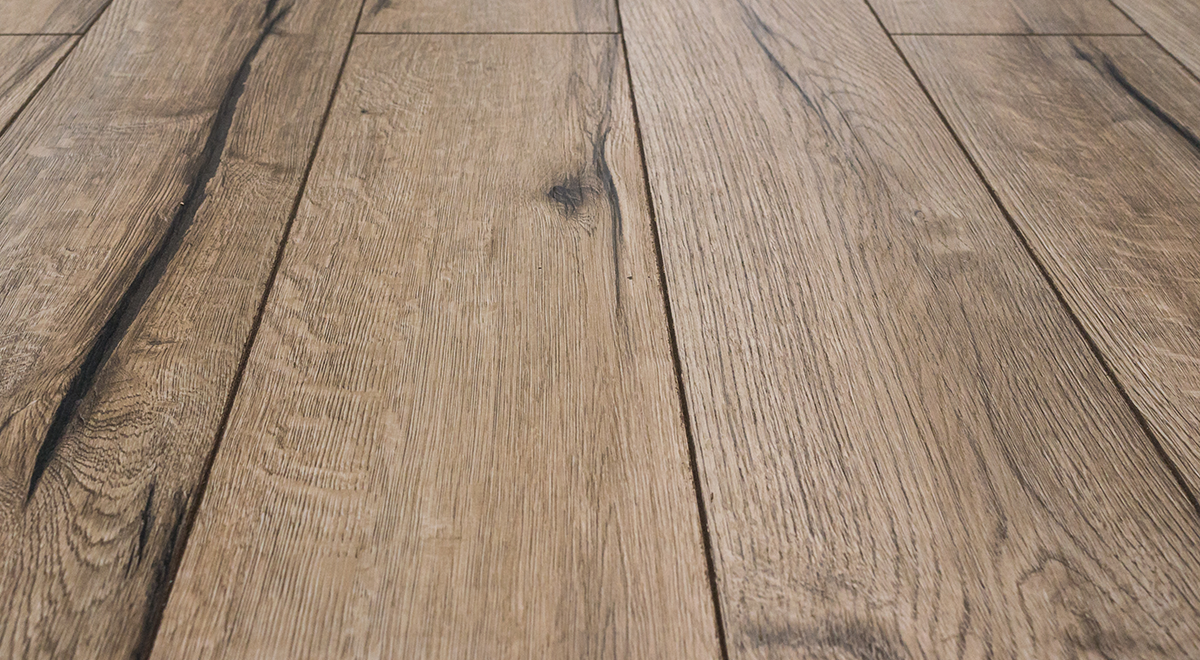The origins of vinyl flooring stretch back to the 1920s, when Waldo Lonsbury Semon first produced what is now called plasticised polyvinyl chloride (PVC). It was developed as a floor covering in 1933, due to its resilience and ease of cleaning. Until the 1990s, vinyl flooring was mainly confined to commercial buildings, hospitals, and other high traffic areas.
The rise of vinyl flooring in the 1990s was caused by a fall in the popularity of carpets. A raised awareness of dust and other allergens, along with the difficulty of keeping carpets clean, created space for a new generation of vinyl flooring.
The technology behind Luxury Vinyl Tiles
Luxury Vinyl Tiles (LVT) are made from polyvinyl chloride (PVC). This popular polymer comes in various grades, and is used to manufacture products as diverse as electrical cable insulation and surgical gloves.
Resilient flooring (flooring which is made of materials that have some elasticity) is experiencing by far the highest growth in the global floor covering market in recent years. 2017 figures alone show a 10% increase over the previous year. LVTs are the key driver in this phenomenal growth, with the global vinyl flooring market alone expected to reach a value of 16.2 billion USD by 2023.
The benefits of LVT
The growth in LVT flooring has come about because of the unique properties of this product, which make it ideal for home and commercial applications. Not only does it meet the creative demands of designers, but it is also extremely durable and sustainable.
Vinyl is a very good insulator. In a global environment where individuals, companies, and countries are working to reduce their carbon footprint, this is a significant benefit. Homes with LVT flooring have a reduced heat transfer into the ground, therefore using less energy to heat in winter and cool in summer.
Another sustainable benefit of vinyl flooring is its suitability for recycling. PVC can easily be mechanically recycled. It is melted into pellets or granules for reuse. The material does not degrade in any way as a result of this process. This contributes significantly to sustainability by reducing the need for virgin PVC production.
LVTs have safety and health benefits as well. Unlike carpets and wood, LVTs are not flammable. As a result, they do not contribute to the spread of fire through a building. LVTs are also easy to clean. They do not trap dust, leading to a healthier environment, especially for those who suffer from allergies.
Installation of LVTs has become easier with advances in technology. Options include gluing in place, click-together systems, and simply laying on the floor with a grip backing. LVTs do not require expert installers, and are much quicker to install than hard surface flooring.
Future trends of LVTs
One of the standout features of LVTs is the ability to emboss almost any finish onto the vinyl surface. Wood grains, textile, and slate finishes have a detailed and realistic look. Latest trends in embossing also focus on the texture of the finished product. Designers and manufacturers are working to provide a look and feel that match, giving the consumer a holistic, organic experience.
Continuous innovation is also improving the installation of LVTs. New click systems are more resistant to leaks at the joints. This is achieved by tighter manufacturing tolerances allowing for tighter sealing of the joints. Even the design of the click lock profiles is changing. Original systems used an angle-angle locking mechanism. This evolved into the use of splines, but more recently angle-fold systems are coming to the fore. Manufacturers also use different locking mechanisms on the long side, compared to the end joints, in order to provide a more secure end joint.
As the LVT market becomes more established, manufacturers are differentiating their products through performance characteristics. Innovations in surface finishers are providing consumers with greater scratch and stain resistance. One of these new finishes even uses cultured diamonds to generate the superior performance consumers are looking for.
All in all, the future of LVTs is bright.
Connect with Vynova
Vynova is a leading European producer of PVC. We are proud to see our products used in innovative ways, such as the latest LVT design trends. Reach out to Vynova to enquire about reliable PVC supply for your needs here.




